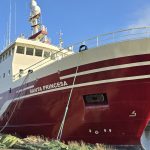As per the federal officials after Deepwater Horizon oil spill they have recorded 156 sea turtle deaths; most of the turtles were Kemp’s ridleys. And though they cannot say for sure that the oil was responsible, the number is far higher than usual for this time of year. It is sure that this oil rig has badly affected a wide variety of marine life, from dolphins to blue crabs. On Tuesday, the National Oceanic and Atmospheric Administration expanded a fishing ban in the gulf because of the spreading oil. But of the endangered marine species that frequent gulf waters, only the Kemp’s ridley relies on the region as its sole breeding ground.
Scientists said that in 1980s Ixtoc 1 spill there were several hundred turtles fell and now there were at least 8,000 adults. The turtles may be more vulnerable than any other large marine animals to the oil spreading through the gulf.
Dr. Pat Burchfield, a scientist at the Gladys Porter Zoo in Brownsville, Tex., who has studied the turtle for 38 years, said that it lives its entire life cycle in the gulf, which is why we are so critically concerned. André M. Landry Jr. of the Sea Turtle and Fisheries Ecology Research Laboratory at Texas A&M University, Galveston, said satellite radios had been attached to several sea turtles for research. He hopes these will offer clues about what is happening offshore.
Barbara Schroeder, national turtle coordinator for NOAA fisheries, the government agency charged with assessing damage to offshore life, said that the agency was investigating the sea turtle deaths intensively, but did not have many answers yet. She cautioned that it might be hard to determine conclusively how the turtles died or even how the spill was affecting the species more generally.








